This post begins a series of posts focusing on the way games introduce themselves. The first moments of a game are its opportunity to hook the player, teach them the basic mechanics in place, and let them apply those mechanics in clear-cut, simple ways. This is the place to set up expectations to maintain—and creatively exceed—throughout the rest of the adventure. In this series, we’ll take a look at several games, franchises, and genres to see how they made a first impression to keep the player playing, and we’ll start by unearthing the tactics utilized in Shovel Knight’s “Plains of Passage.”
Shovel Knight introduces its key means of interaction not only in its title, but in small details like the protagonist’s animation on starting the level. He flips onto the screen and raises his shovel aloft, ready to face the challenges ahead.
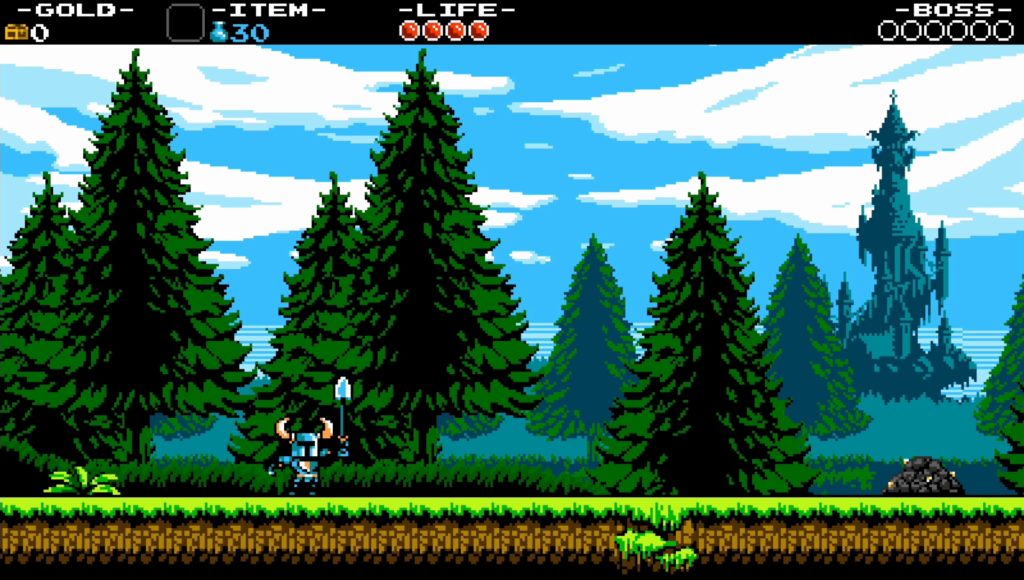
This tells the player one thing: the main character is proficient with a shovel—and what should be highlighted by a break in the trees on the far side of the screen but a dirt pile? The connection is a ready leap, and the shining animation and sparkling gems unearthed only encourage this instinct.
On collecting the loot from this shining dirt heap, the first enemy wanders onscreen.

We know it’s an enemy because its deep red sticks out from the greens and blues present in the background and on the player. This challenge is built upon with enemies placed in more precarious locations throughout the rest of the room, but all are manageable with the basic skills of jumping and attacking. The final thing the first room teaches is that the shovel strike breaks dirt blocks. A wall of these guarantees that the player knows how to attack before proceeding, even if they ignored the enemies and dirt piles prior.
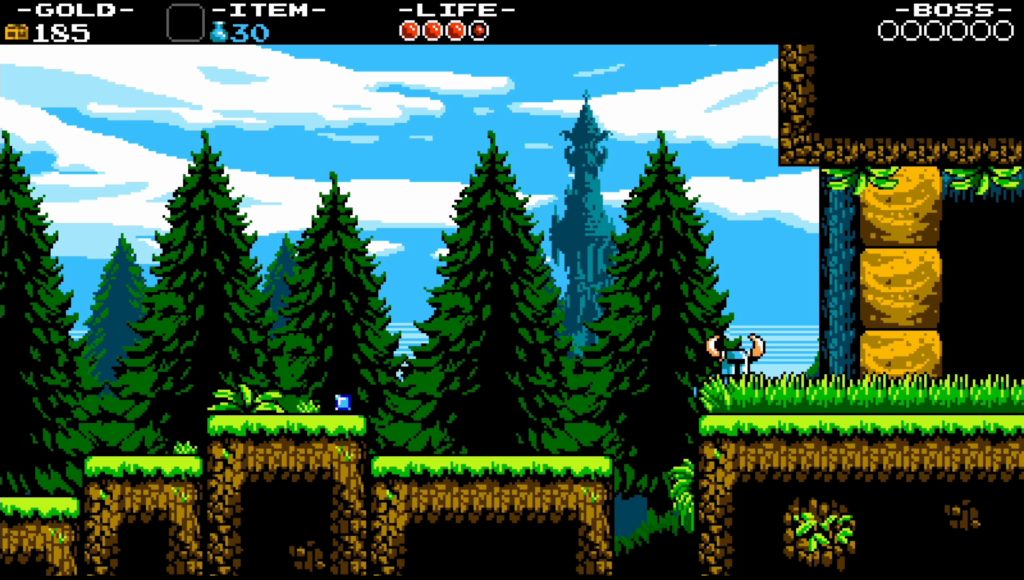
In the next couple of rooms, the player learns how to use the downward attack, first for breaking dirt blocks on level with the ground, then for gaining height off of an infinitely-respawning bubble, both in complete isolation.
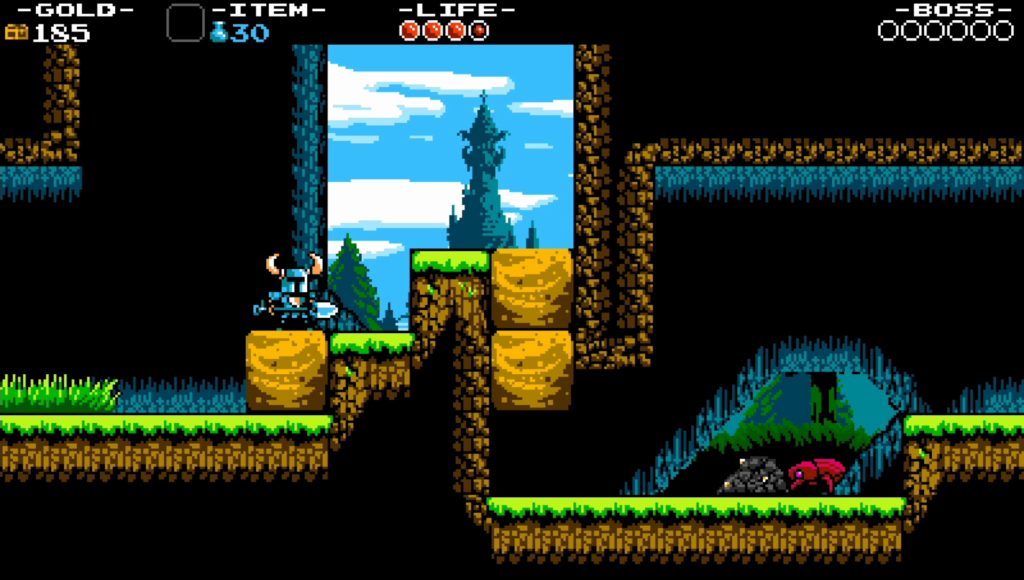
This isolation mirrors the introduction of several other elements throughout the rest of the stage, from the dragon mini boss and skeleton enemies to moving platforms and breakable walls. The rooms throughout the level are each themed towards introduction and utilization of particular stage hazards without ever breaking the overall “grasslands” theme.
As another major mechanic of Shovel Knight, the introduction and gradual buildup of breakable walls deserves its own focus. They are first seen in as jarringly obvious a way possible; the breakable portions are clearly partitioned from the static terrain, and presented both with and without an example of the marks used to signify their presence.
In this first case, they are required to proceed through the room, but the very next room uses them to conceal a secret area—equally as overt, and equally as effective at demonstrating how the game will use them later. Further on in the stage, a room is presented with one clear breakable wall and one far less clear. However, the reward for the less clear of the pair is plainly visible on the next screen, encouraging the player to go back and find what they missed.
If the first half of the stage introduces mechanics, the second half expands on them and mixes them up. The dragon mini boss is encountered a second time, but with pits positioned right in the way of the formerly “easy” strategy. Moving platforms develop from a slap on the wrist to a short ride across pits or spikes, and bouncing across bubbles using the down thrust goes the same way.
All of the skills developed in the stage culminate in the boss fight, an unprecedented first-stage mirror match. The Black Knight parallels the player’s skill set in many ways while having his own abilities to keep the player on their toes.
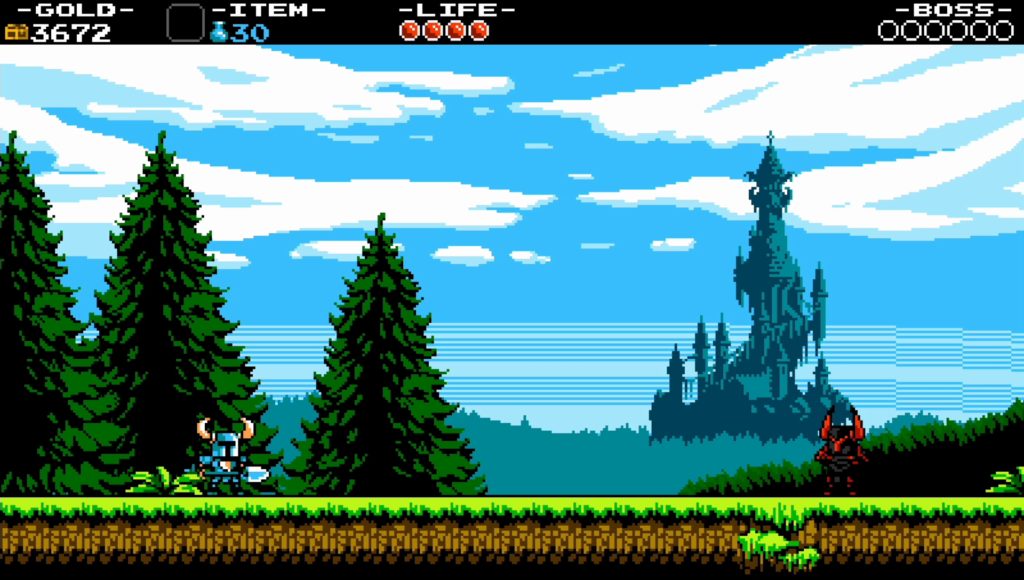
A jump, shovel strike, or downwards drop can be met in kind, and the rival offers no quarter to repeated use of the same basic attack. This fight, with its stage, teaches the player all they need to know about the game: basic movement, common types of obstacles and how to overcome them, and how bosses will require varied strategies to conquer. A first impression fosters expectations, and Shovel Knight impresses in spades.
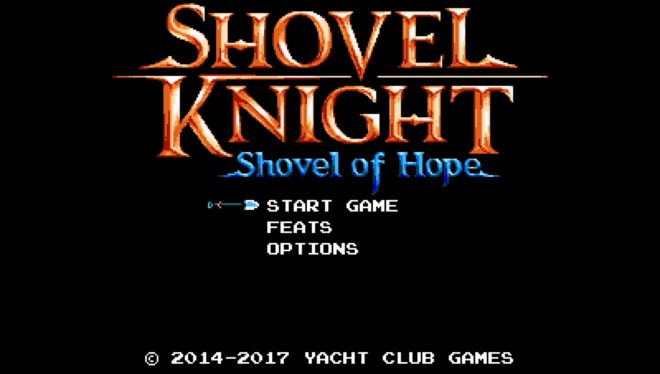
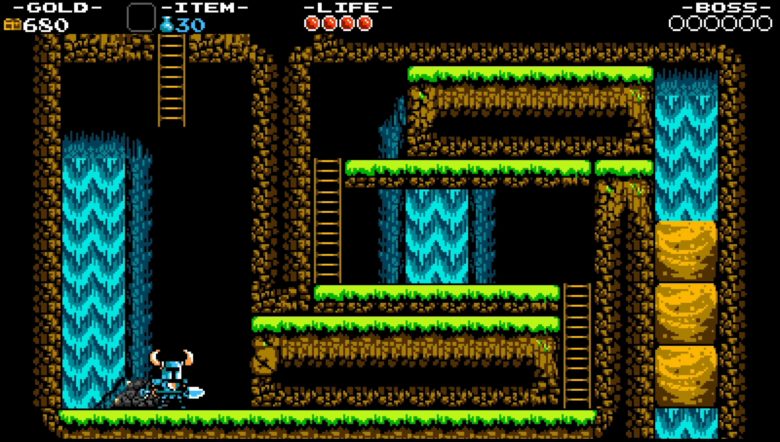
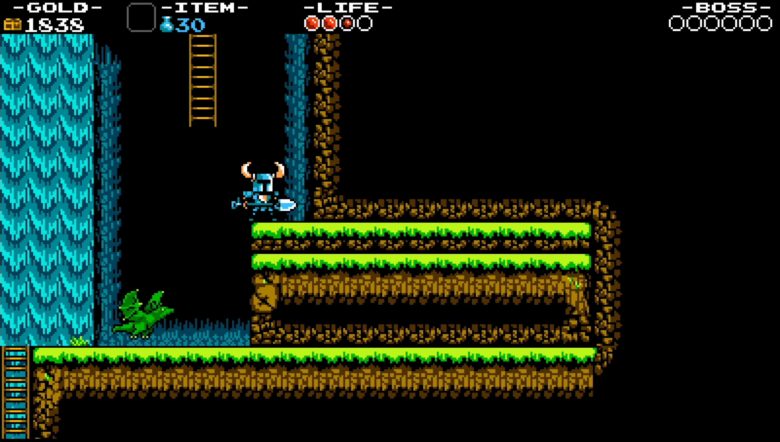

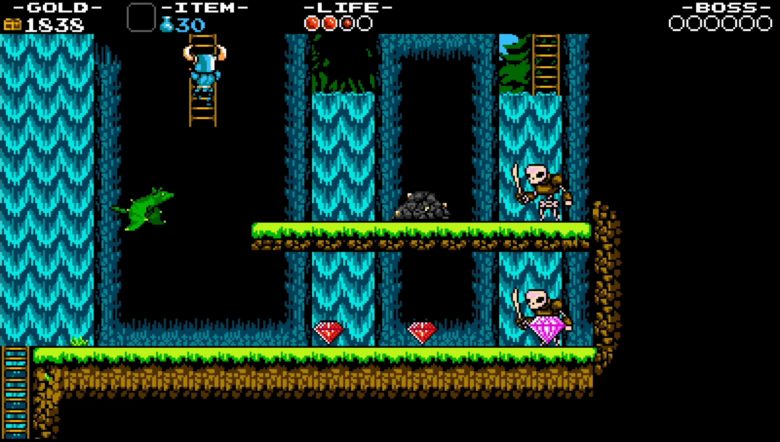
Took me a bit to figure out what was going on in that slideshow, but very clever. I’ll be excited to play this game for the first time.